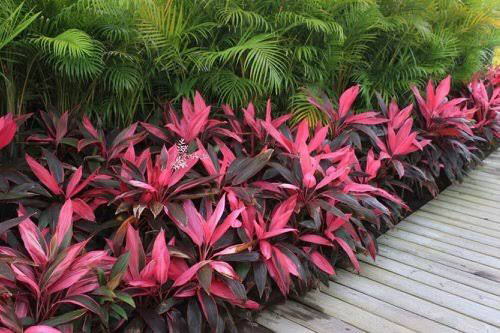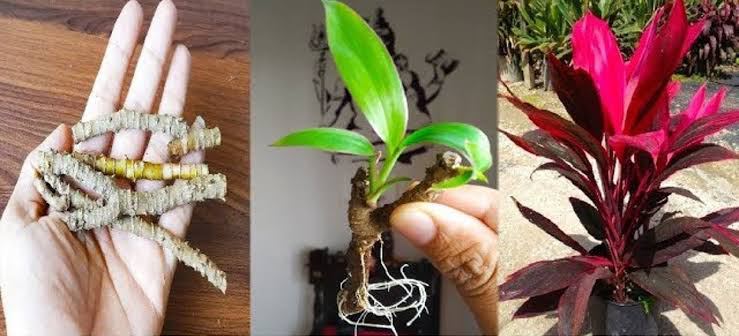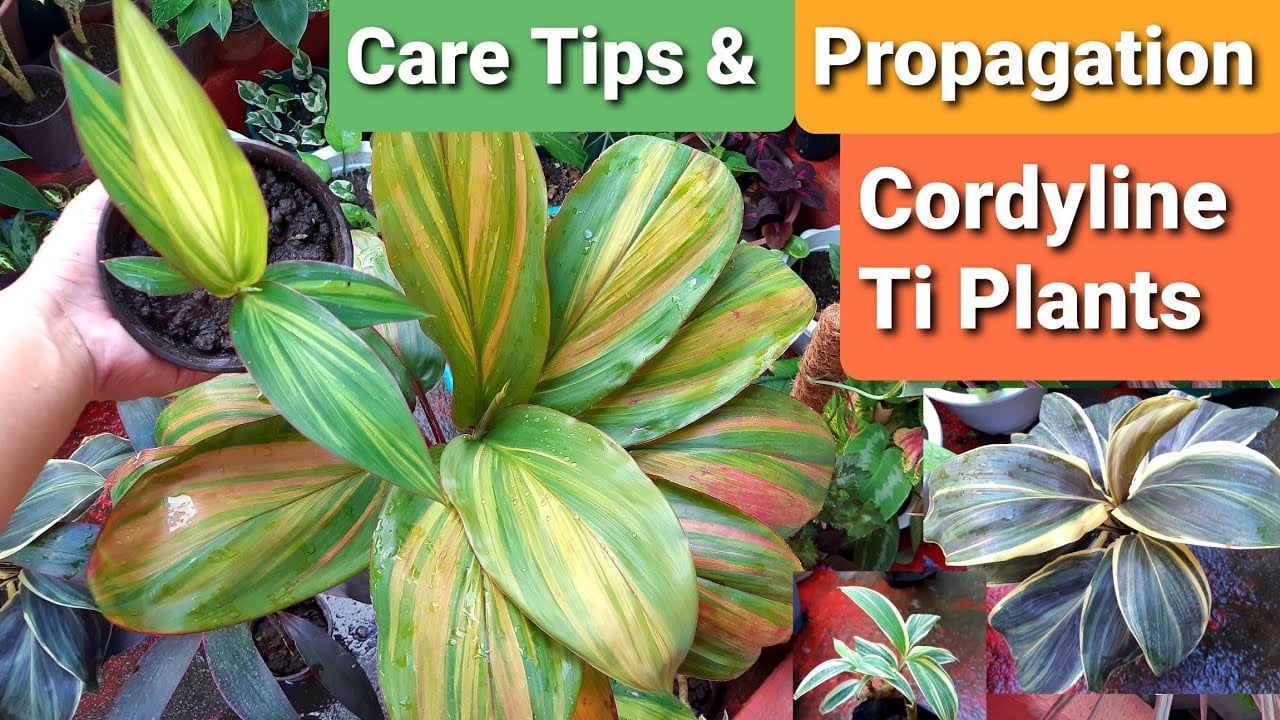Table of Contents
Cordylines are exotic-looking palms mostly found in the Mediterranean region, Pacific Islands, and parts of Southeast Asia with striking leaves and vibrant colors that are used as borders to decorate a flower bed or as foliage relief in garden bedding schemes. You can also use it as a focal houseplant for a striking look.
Also known as the tropical ‘cabbage tree,’ the foliage includes leathery leaves in a lance shape with red-purple berry-like fruits. You can also find fragrant cup-shaped white flowers that are popularly seen from July to August.
Since they are perennials, you do not need to maintain them too much while also not worrying about watering since they can survive without irrigation, like Cactus.
Read here to find out how to grow these palm-like trees and understand how to revive a dying cordyline.
Ideal Growing Conditions of the Cordyline

Cordylines grow best in settings like:
- Light: green-leaved cordylines thrive in highly humid levels with a lot of direct sunlight and need minimal shade, but non-variegated (colorful) varieties prefer partial shade conditions.
- Soil: alkaline or neutral with 6.6-8 pH soil in clay, sand, chalk, and loam forms with fertile, well-drain features.
- Supplements: slow-release compost added at the beginning of spring and extra liquid for summer is best. During the growth period, you can use liquid fertilizers.
- Water: use excess water and let it drain from the container, or use sprinklers when the soil surface is dry.
Cordylines grow best in moist compost. However, if you see the plant health declining rapidly with stem and root rot, the reason could be over-watering—similarly, symptoms like dry leaves and inadequate growth state that the plant is under-watered.
Growing Guidelines for Cordylines

Planted as a lawn or border, in contrast to other plants, cordylines in mild, humid locations like the seaside survive better and must be sheltered from cold winds. You can also grow them in pots, but they outgrow containers within two years, so ensure to relocate them.
In an outdoor setting, mulch around the base to plant cordylines after the risk of frost has ended. If you plant indoors, place the pot or container with loam-based soil and ample drainage near a sunny window. In warm tropical climates, cordylines can survive both indoors and outdoors, but if the location is not tropical or humid, it is best to grow them indoors.

Since they are resistant to drought-like conditions, you can use water-retaining granules in a container filled with loam-based soil. You can also use a pot topped with colorful stones or pebbles to use it as a decorative centerpiece.
During winters, the container can be moved to a conservatory, greenhouse, or temporary shelter and wrapped with polythene to create a protective wall and fleece to secure stems, foliage, and tender parts.
Caring for Your Cordylines

Here are ways to care for and maintain cordylines:
- Watering: Whether you grow cordylines outdoors as a border or in containers, water them regularly. Established plants are drought tolerant, so they need not be flooded, specifically when they are indoors during winter.
- Feeding: use a liquid fertilizer during the spring to late summer months. For potted versions, remove about 5 cm of compost layer and replace it with a fresh mixture.
- Mulching: insulate the roots of border plants in autumn and use a layer of gravel for potted ones.
- Deadheading: Remove faded flower spikes to help plants produce red or purple berry-like fruits and tiny white blooms.
- Shortening: reduce size during the growing season by pruning it mid-spring and aid the plant to produce new sprouts.
- Propagate: To grow new cordylines, get cutting from a mature plant using a sharp shear and gently place it in soil. You can also use seeds to propagate multiple plants.
Plant Maintenance
Enhance the plant’s appearance by removing older leaves. Cut spent flowers, damaged stems, and dead leaves regularly. To protect the plant from winter winds, mulch around the base and loosely wrap a soft fabric around the leaves. If the plant is in a container, move it indoors.
To further protect the plant from diseased infections and pests, observe for signs of physical stress like spots on leaves, yellowing or browning foliage, wilted leaves, frost damage, and poor growth. Sometimes, you may encounter mealybugs, aphids, spider mites, thrips, fungal infections, and molds infecting leaves. If harsh winters harm stems, remove the affected part, try to remove it immediately, and replant your cordyline.
Final Thoughts
Now that you know how to grow cordylines, care and maintain the plant regularly to enhance the look of your garden. Observe the main stem and leaves to check signs of infestation or poor growth. You can remove damaged foliage or stem sections to save the plant from dying.
Cultivate evergreen tropical cabbage palms or cordylines to grow vibrant leaves flowing like a fountain and enhance the appearance of your garden. You can also pot them in containers to create striking indoor decorative pieces.
Their unique architectural appearance suits tropical, Mediterranean, seaside, and contemporary urban garden bed displays. They are also ideal for creating ornamental borders or decorating small gardens and potted containers.
Frequently Asked Questions
How Can Cordylines Grow Easily?
To grow cordylines easily, provide the right conditions like adequate direct sunlight (except for colorful varieties that need partial shade), regular watering, and alkaline or neutral well-drained soil. Remove wilted leaves, spent flowers, and damaged stems and maintain them.
Do Cordylines Grow Best in Pots or Ground?
You can successfully grow cordylines both in pots or on outdoor grounds. Just remember to mulch around the plant base to protect roots during chilly winters and wrap the leaves. Also, bring potted plants indoors before the temperature drops severely.





